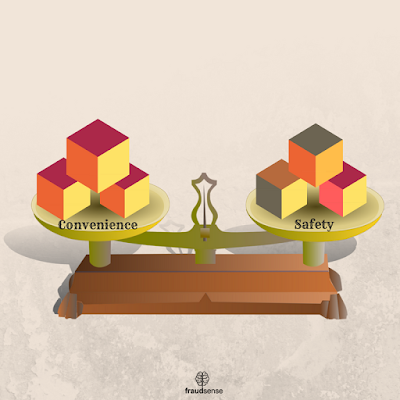Convenience versus Safety: An IoT Conundrum
By: Dorothy Riggs, CFE
The Modern Conveniences of Technology
Did you ever think you would see the day that your music of choice could be streamed through your refrigerator? Technology makes it possible. Today there are fridges, stoves and laundry machines that you can command or chat with via text message. With the touch of a finger, smart applications allow us to connect to and communicate with all of our devices from practically any destination in the world. Not only can your devices communicate with you, they can also communicate with each other.
icontrol’s 2015 State of the Smart Home Report predicts that a typical family home could contain more than 500 smart devices by 2022. Because of the value individual and commercial consumers place on efficiency and accessibility, many products are now available, like mobile banking which allows completion of a variety of financial tasks via smartphone, such as depositing a check. According to the American Bankers Association (ABA), 1 in 3 Americans have deposited a check via mobile device within the past 12 months. In addition to being amazing and continually advancing, technological modernization certainly introduces a heightened level of convenience to work and personal life.
Why do Smart Devices Pose Security Risks?
The IoT (Internet of Things) is the concept of connecting any fathomable device with an on and off switch to the Internet, which allows communication between devices & people, people & people and devices & devices. Security risks are major disadvantages associated with such an accessible level of communication and convenience. With all of the connecting going on, we must be constantly aware that hackers can potentially intrude on those connections, which poses security risks. For instance:
- Hackers can spy on you via smart devices with cameras. This invasion of privacy allows the bad guys to view live video or your actions, along with your room and its contents.
- Garage doors and security systems can be compromised by skilled cyber intruders, which place physical safety and possessions at risk.
- Smart cars, other smart vehicles, and systems can be commandeered by hackers, halting access or delivery of service.
How can Consumers Increase Safety?
While there’s no hacker-proof method to insure 100 percent safety, following these suggestions will definitely increase safety in your IoT cyber environment:
- Conduct research to increase your awareness of potential risks associated with devices and employ any steps that mitigate those risks.
- Change default passwords on your devices.
- Update each device with the latest security software.
- Install security apps that notify you of device intrusions.
Convenience doesn't have to be sacrificed. Through risk awareness and practicing all safety measures a comfortable balance of safety and convenience and be experienced.




Comments
Post a Comment